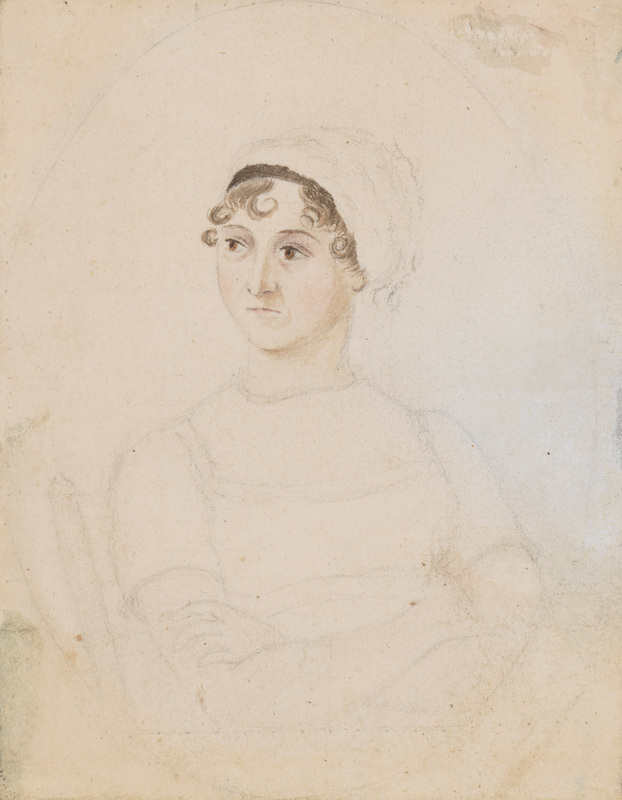Headnote for Jane Austen
By
John O'Brien
 Source: Watercolor portrait of Jane Austen by her sister, Cassandra (National Portrait Gallery UK)
Source: Watercolor portrait of Jane Austen by her sister, Cassandra (National Portrait Gallery UK)
There are good reasons why Jane Austen has become the most popular English novelist of the nineteenth century, and perhaps the most popular English novelist, period. No other novelist is better at combining command of plotting, precision of characterization, and control of narrative voice than Austen. It no surprise that her works have never been out of print, and that each of her major novels has been adapted for film and television many times over. Austen’s novels are extraordinarily entertaining, but also incredibly rigorous; they reward multiple re-readings, each time revealing new subtleties and complexities.
Austen grew up in a middle-class family in Steventon, a village in Hampshire. Her father, George Austen, was the local clergyman, and her mother, born Cassandra Leigh. They had six children in all: four boys (James, George, Edward, and Henry), and two girls: Cassandra and Jane, who was born in 1775 as the last of the six. Jane seems to have started writing in her teens, beginning with parodies of history textbooks, some of which were illustrated by Cassandra. By the mid-1790s, she was writing works of fiction, and in 1803 she reached agreement with the London publisher Benjamin Crosby to publish a novel called Susan, an early version of the work that would eventually be published as Northanger Abbey. We do not know why Crosby did not publish Susan at the time; it seems clear from Austen’s correspondence with him that she was frustrated at his foot-dragging. She eventually bought the rights to the manuscript back. It was not until 1811 that one of Austen’s novels was published. That was the year that Sense and Sensibiliy came out, and after that a series of novels followed in quick succession: Pride and Prejudice in 1813, Mansfield Park in 1814, and Emma in 1815. Not long after the publication of Emma, Austen’s health began to deteriorate. She continued to write, completing Persuasion in 1816 and starting Sanditon in early 1817. But she stopped working on Sanditon after a few months, probably due to her illness; it was only published in the twentieth century (and recently became the inspiration for a television series based on the world created in the fragments that we have). Jane Austen died in July 1817, at the age of 41, in her sister Cassandra’s arms. From this distance we cannot be sure what killed her. Scholars in the field of medicine, assessing the symptoms Austen described in letters, have theorized at times that it was Addison’s disease, which affects the adrenal gland; others have suggested non-Hodgkins lymphoma. Late in 1817, Austen’s family published her first completed novel Susan, now retitled Northanger Abbey, in a set with her last completed novel, Persuasion.
Austen was, then, just getting started in a career as a professional novelist when that career was cut short. What she might have written in the future is one of the great “what-ifs” of literary history. The novels that we do have are each extraordinary, combining conventionality (each is a variant of the popular genre of the “courtship novel,” and we never really doubt that the heroine and hero will get together in the end) and radical experimentation with voice, point of view, tone, and characterization. Austen joked in a letter to a nephew that her writings were like a “little bit (two inches wide) of Ivory on which I work with so fine a Brush, as produces little effect after so much Labour.” But that kind of modesty also exists alongside Austen’s equally powerful ambition and boldness. Her works have delighted readers and been a profound influence over the novel in English for more than two centuries.
This the only certain portrait that we have of Jane Austen. It was done by her sister Cassandra in pencil and watercolor, probably around 1810, when Austen was about 35. (National Portrait Gallery, London),